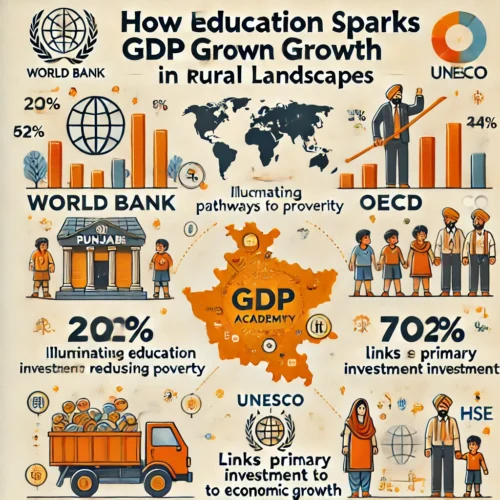The Power of Education in Rural Economies
Education is often hailed as the cornerstone of economic development, and nowhere is this more evident than in rural landscapes. Organizations like The World Bank, OECD, and UNESCO have extensively studied the link between education standards and GDP growth, particularly in rural areas. This blog delves into how education has transformed rural regions, specifically focusing on the Mansa district, and catalyzed economic growth.
The Global Perspective – Education as a Catalyst for Economic Growth
Several world organizations have underscored the importance of education in driving economic growth. The World Bank emphasizes that quality education in rural settings is a key investment for reducing poverty. OECD research highlights that cognitive skills, not just school attendance, are crucial for economic growth. UNESCO supports inclusive, quality education under the Sustainable Development Goals, linking it to enhanced skills and employability in rural communities. HSE University’s research further underscores that investments in primary education in emerging economies are foundational for economic growth.
The Rural Scenario – A Tale of Transformation
Focusing on rural regions, particularly the Mansa district, we see a compelling narrative of how education has spurred economic growth. In 2015, the literacy rate was a mere 62%, hindered by poor school infrastructure, lack of electricity, and inadequate teaching staff. The GDP growth was stagnant at 2%, with the economy largely dependent on agriculture.
The Turnaround – 2023 and Beyond
Fast forward to 2023, and the literacy rate has risen to 72%, thanks to significant improvements in infrastructure, teacher training, and digital resources. This educational uplift has translated into a GDP growth of 4%, demonstrating the economic benefits of enhanced human capital. Improved education standards have not only boosted productivity but also fostered innovation and economic diversification.
The Role of Akal Academy and Kalgidhar Society
The chain of 130 Akal Academy Baru Sahib Schools, run by The Kalgidhar Society, along with two universities—Akal University Talwandi Sabo and Eternal University, Baru Sahib Sirmour—has played a pivotal role in this transformation. These institutions have catalyzed GDP growth in the 6,450 villages they operate in across North India. Programs like Educate to Save ensure that underprivileged children are brought back to school, further enhancing the region’s educational and economic landscape.
Education as the Foundation of Prosperity
Collectively, these findings indicate that advancing education standards positively correlates with GDP growth in rural areas. The greatest impact is seen when education is of high quality, relevant, and accessible. The story of rural regions, particularly the Mansa district, serves as a testament to the transformative power of education in driving economic prosperity in rural landscapes.
















Add comment